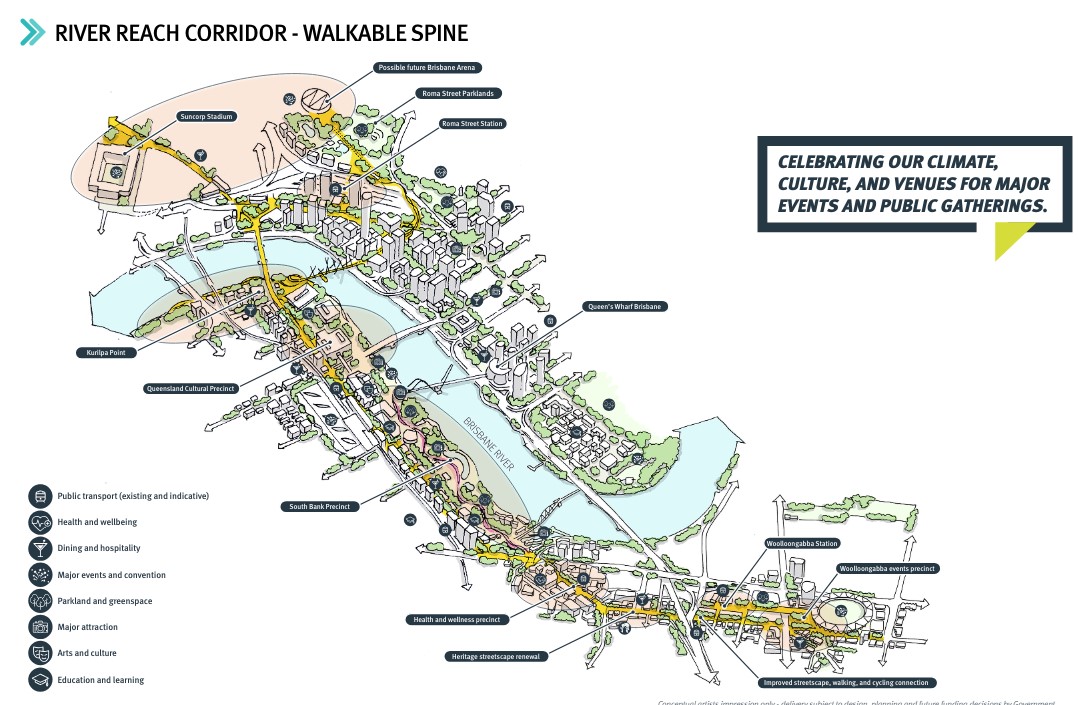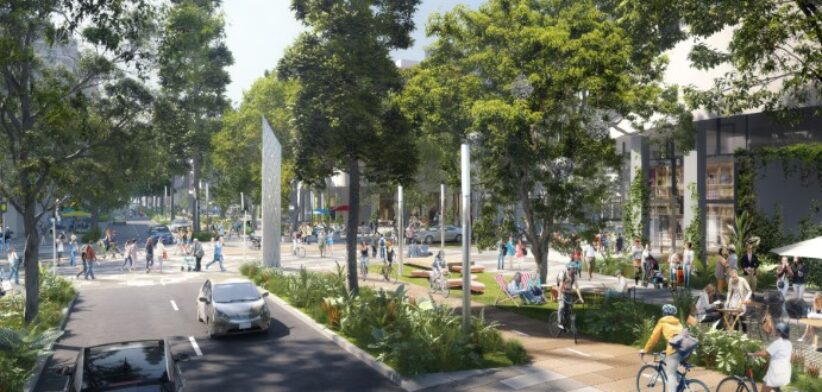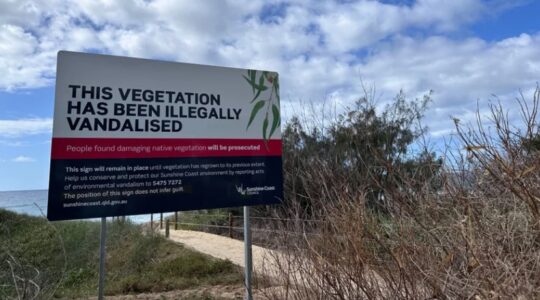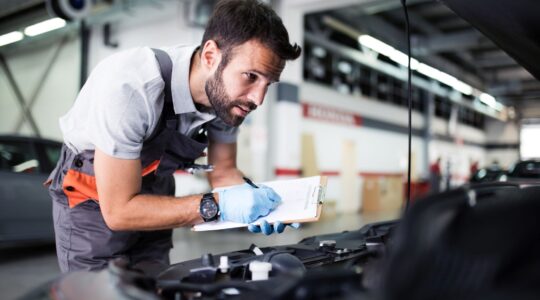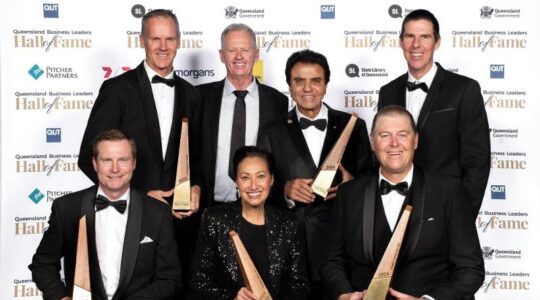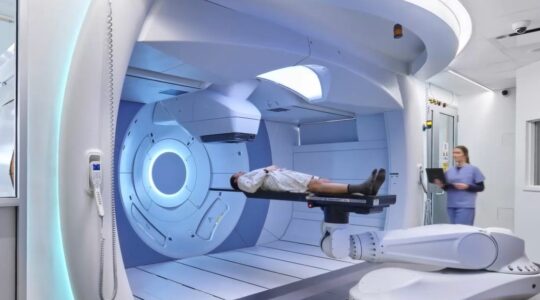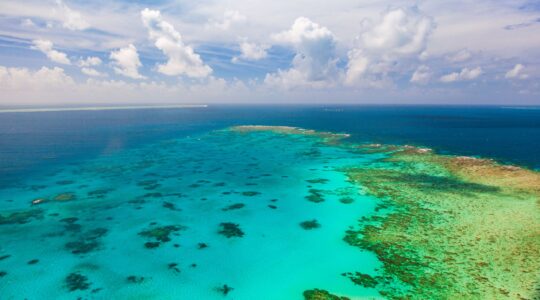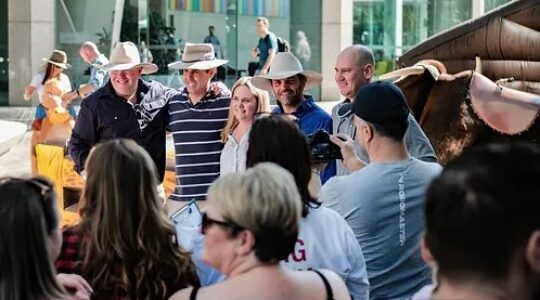The future of Brisbane’s inner-city connectivity will focus on 11 destination, economic and lifestyle precincts.
The State Government’s Connected Precincts Program aims to facilitate better links for pedestrians and cyclists between precincts which run from Northshore Hamilton to Woolloongabba,
The program includes work featured in the Future South Bank Master Plan, also launched last week, which has three key points for change, the Southern Gateway, Northern Gateway and Grey Street, where the focus will be on prioritising people and active transport.
The Master Plan also includes a revitalised gathering place at the site of the Cultural Forecourt.
The Connected Precincts Program includes a green active travel corridor and a Walkable Spine, through the Woolloongabba Priority Development Area and South Bank, linking with the proposed Brisbane Arena at Roma Street and Suncorp Stadium.
State Development Minister Grace Grace said both the South Bank Master Plan and the Connected Precincts Program would enable easy, walkable access between the city’s proposed Olympic and Paralympic venues in 2032.
The precincts covered in the Connected Precincts Program are:
Destination precincts
Woolloongabba:
Woolloongabba is undergoing transformative urban renewal.
Leveraging public transport investment in Cross River Rail and the proposed Brisbane Metro, Woolloongabba is underpinned by strong transit-oriented development credentials, enabling quality higher-density living near transit hubs and existing services.
Woolloongabba’s improved transit solutions are reinforced by its central location and opportunities to enhance active travel network, connecting the area to South Bank and the CBD, as well as creating a web of subtropical connections linking new open space and better connecting existing open space, such as the South Bank Parklands, Raymond Park and Rotary Park.
South Bank:
South Bank Parklands is visited by an estimated 14 million people every year.
The precinct serves as a key walking, riding and rolling corridor between other inner-Brisbane precincts like the CBD, Roma Street, Woolloongabba and the Cultural Centre.
It’s a major economic contributor to Queensland, with greater South Bank estimated to contribute $900 million annually to our economy and supporting an estimated 8100 jobs.
The Future South Bank Master Plan formalises a green active travel corridor with the Walkable Spine that will link the Brisbane Arena at Roma Street and Suncorp Stadium to the north with the Gabba in the south.
This will be enhanced by the Neville Bonner Bridge which will carry increased foot traffic from Queens Wharf Brisbane, becoming a convenient way for some of the 8000 workers estimated to be employed across the precinct and for other CBD workers coming to and from South Bank and West End.
Other major projects like Brisbane Metro and the New Performing Arts Venue will continue to shape the precinct.
Cultural Centre:
Located between South Bank and the new Kurilpa Point Precinct, the Cultural Centre is Queensland’s heritage listed arts precinct.
It’s the centre of Queensland’s art and culture scene, welcoming around 7 million visitors every year.
Like South Bank, the precinct serves as a key movement corridor between other inner-Brisbane precincts like the CBD, Roma Street, and Woolloongabba. It is a leading example of co-located cultural institutions, which is rare worldwide.
Major projects like the New Performing Arts Venue will continue to cement the precinct as the culture hub of Brisbane.
Kurilpa:
Kurilpa Point has a rich heritage and cultural history.
Part of the area is currently earmarked to be used as the International Broadcast Centre during the Brisbane 2032 Olympic and Paralympic Games, and after the Games, the site will be redeveloped into a high-quality, mixed-use precinct with open space and community facilities.
The area is currently under-utilised, with the opportunity to renew and better connect it to other precincts, ensuring people can move to, through, and from the precinct seamlessly.
It’s an opportunity to create a mixed-use lifestyle precinct that provides more river-front active transport options, more housing, better connectivity, and continues to link the area with its original culture, art, and history.
Roma Street:
The Roma Street Precinct is Brisbane’s busiest transport hub.
The major transport projects of Cross River Rail and Brisbane Metro will continue Roma Street’s history as a public transport hub.
These projects, as well as upgrades to Suncorp Stadium and the proposed Brisbane Arena, will allow redevelopment of an under-utilised area of Brisbane into an entertainment precinct with open spaces and active transport connections to surrounding areas.
Economic precincts
Herston:
The Herston Precinct is one of the country’s leading health, wellbeing, medical and research hubs.
It is currently home to Royal Brisbane and Women’s Hospital, Queensland Institute for Medical Research Berghofer, the University of Queensland, and Queensland University of Technology, and supports significant skills, training, and education activities, as well as research and translation within the medical sector.
The precinct is currently undergoing a $1.1 billion, 10-year Herston Quarter redevelopment which commenced in 2017.
Once redeveloped, Herston Quarter will provide a range of mixed uses including health, education and biomedical facilities, residential and student accommodation, carparking, businesses, childcare, retail, and food and beverage services.
Better connecting this precinct to the northern and eastern city areas, the CBD, and onto other precincts will mean a better lifestyle for Herston’s workforce, residents and visitors.
Albert Street (CBD):
The Albert Street precinct is at the heart of the CBD and plays a pivotal role in moving people around Brisbane city.
It is a key walking corridor, connecting public transport stations and stops.
With the new Cross River Rail station underway, the precinct is being redeveloped to create a green spine from Elizabeth Street to Mary Street, activating part of Council’s Albert Street Precinct Renewal Strategy.
This will mean better linking between new precincts. It will also mean better spaces, like subtropical boulevards, to enable more active transport to walk, ride, or roll to work, and encourage more engagement in the city for longer.
Boggo Road:
Boggo Road is a major knowledge and technology precinct, including key health, science, and education institutions.
The precinct includes some of Queensland’s most significant health and research institutions with a rich history in delivering world-class medical outcomes.
It is an economic driver and workforce destination, contributing more than $1.3 billion in value and supporting more than 3500 workers.
The new Cross River Rail station has started a significant redevelopment of the precinct to boost its transport offering and better connect this important area to inner-Brisbane.
Its development as a transport hub will also include the new Brisbane Metro, the V1 Veloway nearby, and a new pedestrian and cycle bridge linking with the Princess Alexandra Hospital and the South East Busway.
By 2036, the Boggo Road Precinct is expected to be Brisbane’s second busiest transport interchange.
Lifestyle precincts
Northshore Hamilton:
Northshore is Queensland’s largest waterfront urban renewal project, with 2.5 kilometres of river frontage.
The $12 billion mixed use, sustainable precinct is progressing as Brisbane’s most connected, sustainable and welcoming riverfront precinct, with this urban renewal project set to contribute more than $14 billion to Queensland’s economy.
Its proximity to the CBD and Brisbane Airport makes Northshore a prime housing hub, set to have more than 14,000 diverse homes that will house around 24,500 people when the precinct is completed.
It includes residential, office, retail, industrial, hospitality, parks and green space.
It is known for its entertainment activities, with thriving art, culture, innovation, and tourism businesses already established.
It will also be home to the main Brisbane 2032 Athlete Village, welcoming more than 16,000 athletes and officials in 2032.
Bowen Hills:
Bowen Hills is a lifestyle hub, made prominent by the RNA and Showgrounds events precinct, along with its prime inner-city location, offering homes, hotels, shops, entertainment, and dining spaces.
Due to the location near the Herston Health Precinct, Victoria Park / Barrambin, and Albion, it’s also a key movement corridor into Fortitude Valley, the CBD and beyond.
The popular King Street dining and entertainment channel has also boosted the popularity of the area, attracting new residential and commercial investment around it.
Currently serviced by the Northern Busway and event-day train services, the new Cross River Rail station underway will resume regular train services from Exhibition Station.
Albion:
Albion is a lifestyle and commercial centre in Brisbane’s inner-north that is vital in connecting our northern inner-city communities, through to the CBD and beyond.
Plans are to create a mixed-use lifestyle and destination precinct, offering social and affordable housing, high-quality facilities, and plenty of green space.
Surrounded by light industrial, residential and hospitality offerings, the precinct will be a key in the corridor linking Northshore right through to Bowen Hills, Fortitude Valley, into the CBD towards Albion.

